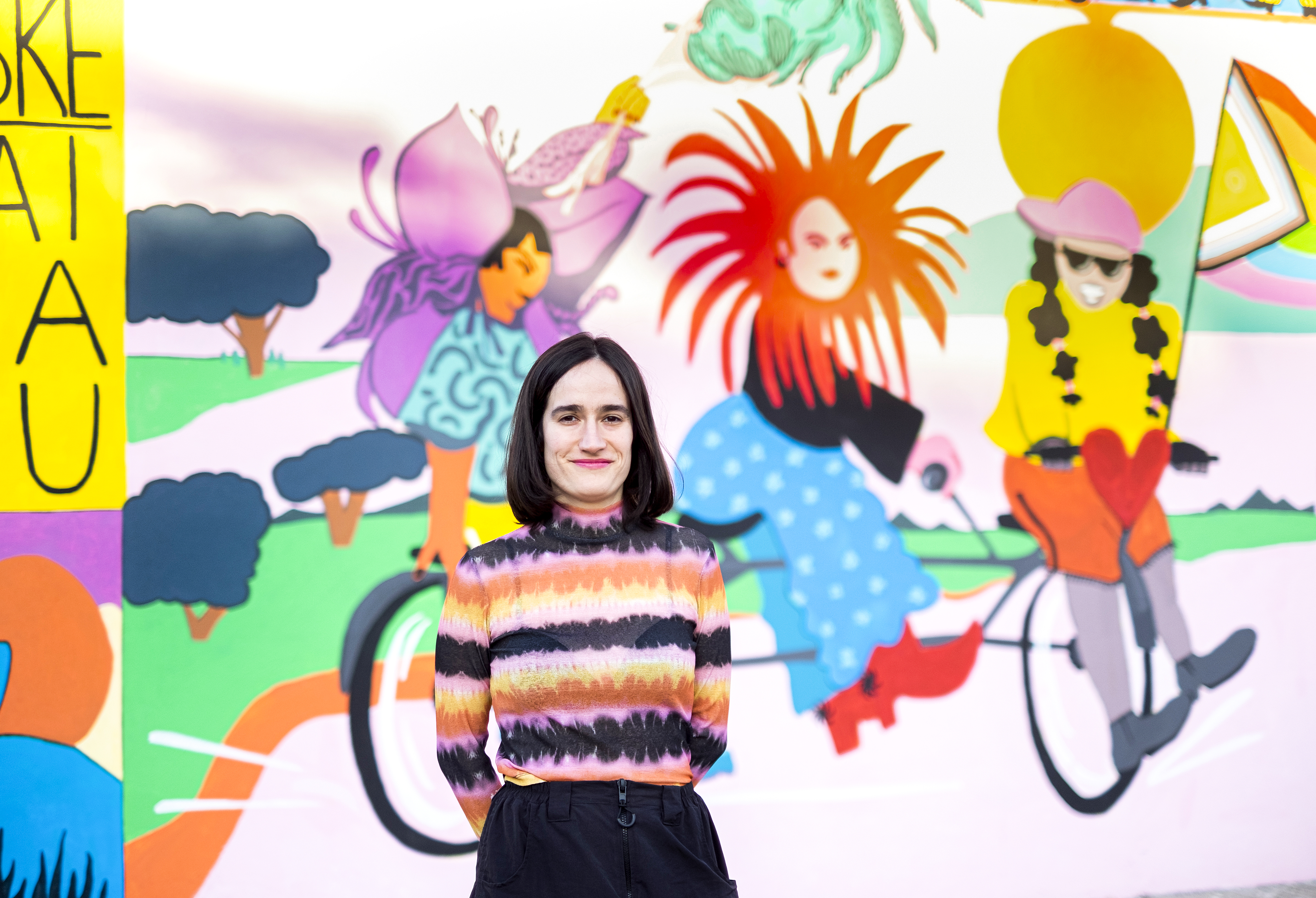
- The poster of the Tour de France 2023 belongs to the illustrator Raisa Alava Robina (1990, Zuhatza). His work is spectacular and invisible, like many others. The mouse of curiosity has led us to puncture in the holes of the fasting. It seeks to make plates on the viewers' heads with their presses, books, discographies and posters.

Break the 2023 Tour de France poster. What did you want to break with? I wanted to not be boring and suggest images, so I've given her joy and movement. I wanted to see the drawing
more than the "graphic super design." The atmosphere of the Tour has never been reflected in the poster and wanted to convey that vitality.
At first the sun of the image was red, but when I said it was awarded I was asked for some small adaptations, especially to add the image of the Guggenheim. In any case, they have very much respected my work and I am happy.

Your star image is from the Tour, but it is not the only international work. New
York Times, The New Yorker, Time Out, HBO, El País, El Salto, Pikara Magazine… I have worked for many, even small customers. The work carried out by the Association of Basque Illustrators is important for this, as we are more than 100 people. Networking is fundamental, because our work is very lonely. It serves us to feel solidarity and to see that we are not Frikis that we draw when we are alone at home. [Jorge] Oteiza is not the only existing Basque artist.
Do the brands of Basque illustrators go unnoticed? Yes. I believe it is the result of the institutional hole. The artists we see in museums are
dead or foreign. Why are Basque artists not valued, recognized or shown? In the Guggenheim, that too happens.
Do you think
the international fokupa will open new doors for you? I don't think my life changes a lot. I am very pleased that I have been left with a lot of people on the street, but I hope to continue as I have done so far.
In the past, art was in museums and galleries. Today, where? On Instagram, on the Internet, or on
Tik Toke. The current galleries are usually found in the aforementioned networks. There are children with tools to do terrible things! I've learned my daily tools on Youtube, and that community knowledge is beautiful. It doesn't make sense anymore.
Like pencils, gaze and rigorous tip. Beyond drawing, what are you looking for with your works? My interest is in drawing and I would say that I usually put all the weight and work on it. I like to complicate the image and introduce fluoride colors. Everyone has their own “hand” and style. I, for example, like the body's skin to
be green or not knowing the gender of the person. I don't want the lean, proportionate boys or girls, but to undo the bodies and be interested in drawing. Like in life, I would say I'm looking for diversity.
.jpg)
At the age of 32, he has been living on live illustrations for eight years… Is there any difference between the former Raisa Alava and the current one? Yes, professionalization. Now ideas
and results come to mind faster. I studied fine arts and then I did the master's degree. I remember what the professor said to me: “You are an artist, super pure, and illustrations and comics are for children…”, that voice has shut me down. I don't care. I've matured, what I like is this, and I'm quiet about myself. To live as an illustrator you have to
be very quick: you have to create illustrations in two days of press (sending, accepting and working the draft, does not give time for more). So ideas have to come quickly, and issues are often not easy. I'm currently working on press, books, record covers and posters.
Today's bread, tomorrow's hunger. Does it cause discomfort? Yes. But we're used to it. Ours is a very lonely job. Some months we
are saturated, others are not. Every time I get a job, I think: Why have you written to me? Where have you seen my works? The nicest part of our work is not knowing what proposals we will be working on tomorrow, otherwise we would not be dealing with issues or ideas. In the press they are rigorous with the themes, since drawing has to convey something concrete. But other times we are free from proposals, and that is also very nice.
Backstage of the Tour
Raisa Alava is an illustrator with many collaborations. He has done his work both for the newspaper The New York Times and for the magazine Pikara Magazine, and now, without being a fan of cycling, he will put the image to the most prestigious elite championship: "I have to admit that I am not a fan of cycling, so it has not been a dream for me to make the Tour de France poster. Joy yes: it will be amazing to see an image in so many great supports in Bilbao. Economic momentum is important, but I know that life is only going to happen to me once. In July I learned that I won the Tour de France poster competition and since then I have not been able to say anything until October, nor show nor send the drawing to anyone."